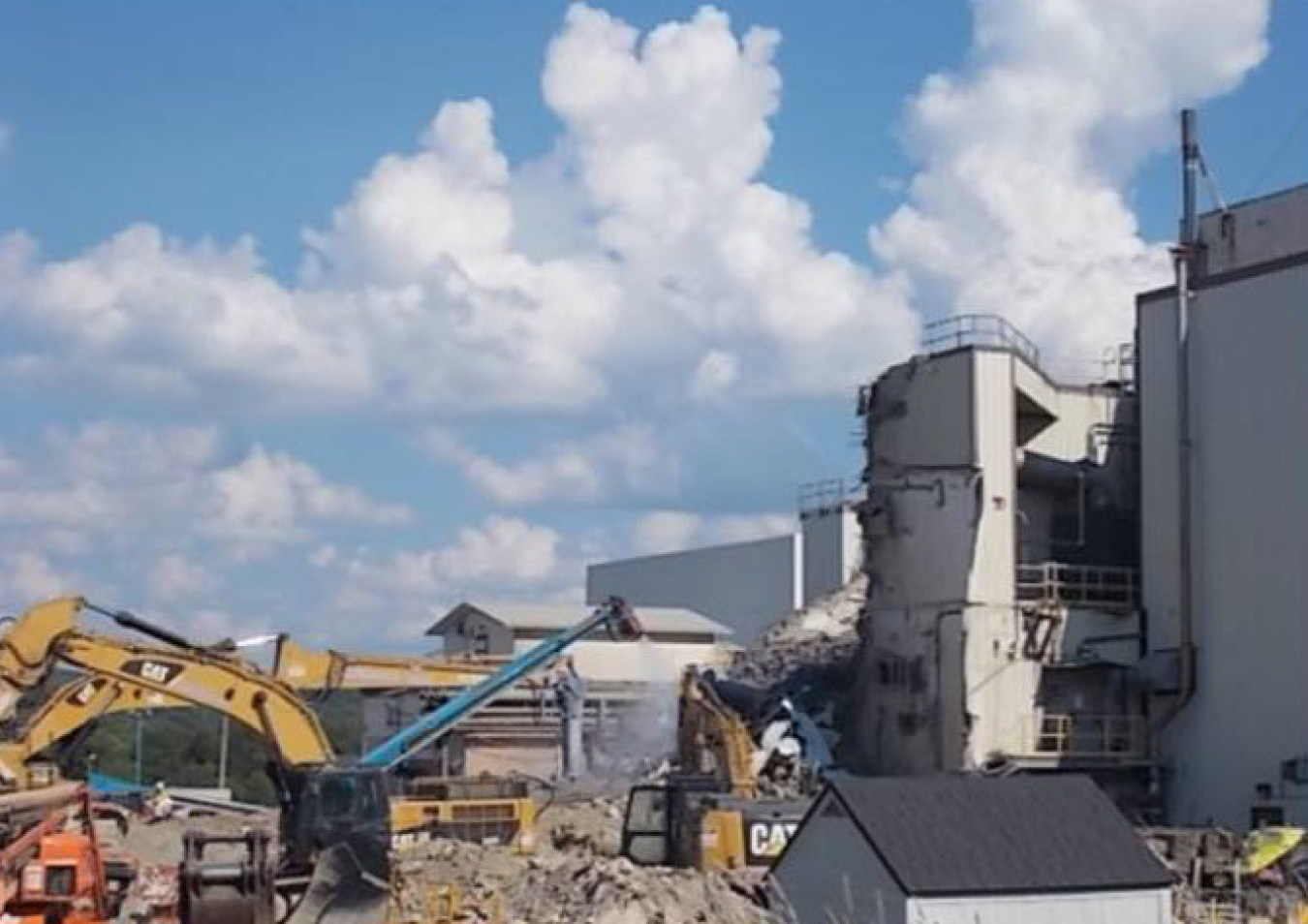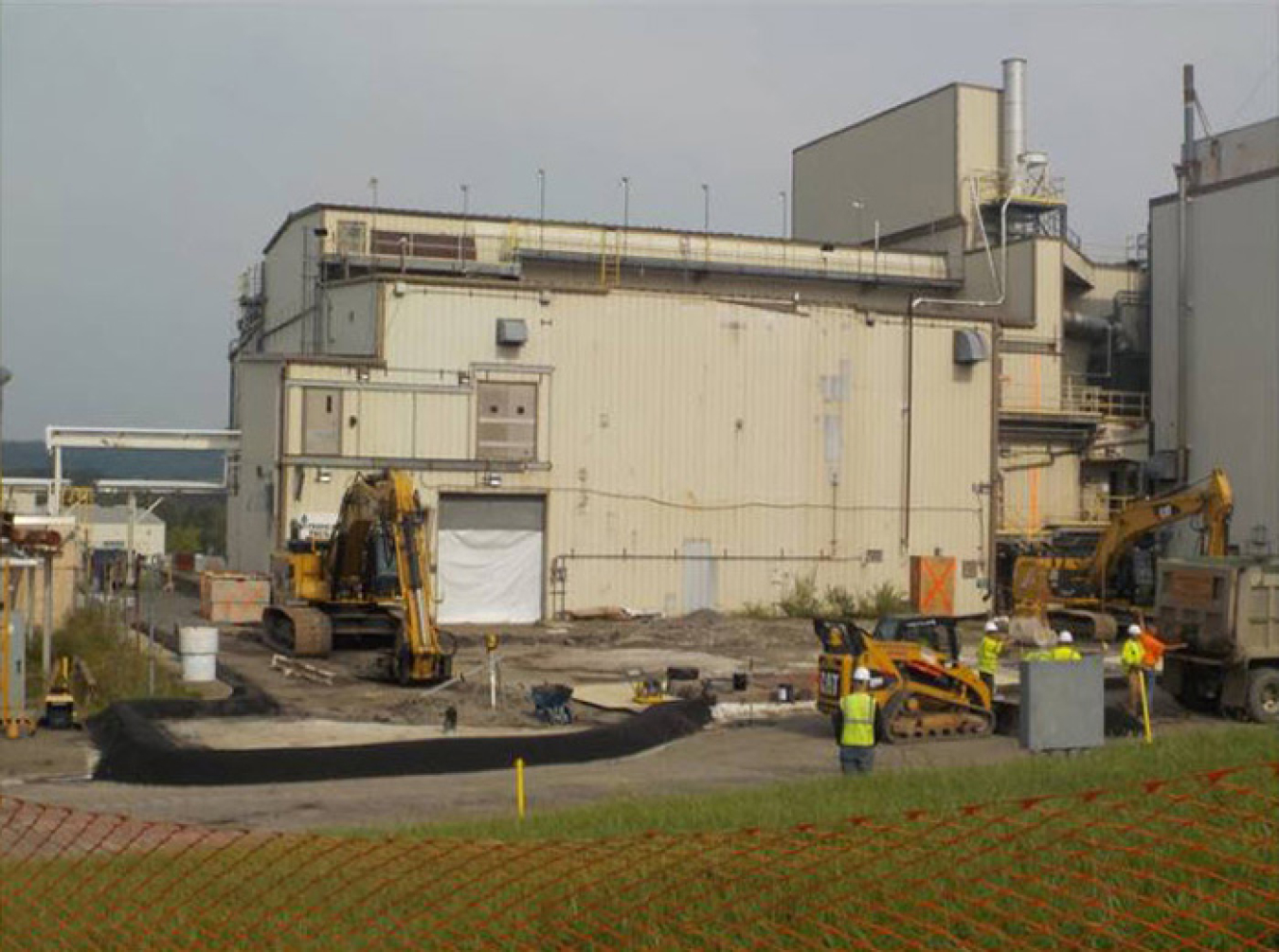In 2018, EM and its cleanup contractor safely completed the demolition of the 50-foot-tall, 10,000-square-foot Vitrification Facility.
Office of Environmental Management
September 12, 2019
WEST VALLEY, N.Y. – In 2018, EM and its cleanup contractor safely completed the demolition of the 50-foot-tall, 10,000-square-foot Vitrification Facility at the West Valley Demonstration Project (WVDP).
The take-down of the Vitrification Facility represented the largest and most complex demolition of a radioactively contaminated facility at the WVDP to date, and was a key accomplishment in the progress to decommission the site.
The undertaking by EM and CH2M Hill BWXT West Valley (CHBWV) demonstrated that robust engineering controls and monitoring techniques can accomplish the safe removal of nuclear facilities, while protecting the workforce, public, and the environment.
“The WVDP team was deliberate in the planning and execution of this critical workscope, which resulted in the safe and compliant demolition of the Vitrification Facility,” said Bryan Bower, EM WVDP Director. “I am proud of the work they have accomplished in reducing legacy risks at the site.”
The Vitrification Facility was used to solidify radioactive liquid high-level waste stored at the WVDP. It was originally constructed in the 1980s as a non-radioactive testing area for the vitrification melter. The facility was later expanded and converted into a full-scale remotely operated vitrification facility.
Designed with reinforced concrete walls, the facility solidified 600,000 gallons of high-level liquid radioactive waste from 1996 to 2002. This waste was generated from 1966 to 1972 during the reprocessing of spent fuel by Nuclear Fuel Services, the former operator of the site.
Demolition of this facility began in September 2017. The first phase involved removing the outer sheet metal and steel portions of the facility with the least radiological contamination. Using a variety of heavy equipment and specialized tools, workers tore down three sides of the facility, including operating aisles, a control room, restrooms, truck bays, stairways, and tool and equipment storage rooms.

The second phase began in November 2017, and involved demolition of the heavily reinforced concrete process cell and remaining in-cell equipment. Using similar equipment, workers safely removed four in-cell coolers weighing 7,188 pounds each, six shield windows, and a 38,000-pound process crane.
The final phase was the removal of a 60-ton transfer tunnel door, 100-ton crane maintenance room shield door, cranes, and equipment. In addition, crews demolished the transfer tunnel, crane maintenance room, and secondary filter room, all structures made of reinforced concrete.
Worker safety and protection of the environment were top priorities during the demolition. Workers used extensive controls to prevent the spread of radioactive contamination and safety professionals provided continuous monitoring and sampling during the demolition process. The demolition was completed in one year, in challenging weather conditions, resulting in no lost-time injuries, no radiological releases, and no environmental issues.
Click here for more information on the West Valley Demonstration Project.

